Abstract
The mathematical theory of linear systems has been used successfully to describe responding on variable-interval (VI) schedules. In the simplest extension of the theory to the variable-ratio (VR) case, VR schedules are treated as if they were VI schedules with linear feedback loops. The assumption entailed by this approach, namely, that VR and VI-plus-linear-feedback schedules are equivalent, was tested by comparing responding on the two types of schedule. Four human subjects' lever pressing produced monetary reinforcers on five VR schedules, and on five VI schedules with linear feedback loops that reproduced the feedback properties of the VR schedules. Pressing was initiated by instructions in 2 subjects, and was shaped by successive approximation in the other 2. The different methods of response initiation did not have differential effects on behavior. For each of the 4 subjects, the VR and the comparable VI-plus-linear-feedback schedules generated similar average response rates and similar response patterns. The subjects' behavior on both types of schedule was similar to that of avian and rodent species on VR schedules. These results indicate that the assumption entailed by the VI-plus-linear-feedback approach to the VR case is valid and, consequently, that the approach is worth pursuing. The results also confute interresponse-time theories of schedule performance, which require interval and ratio contingencies to produce different response rates.
Full text
PDF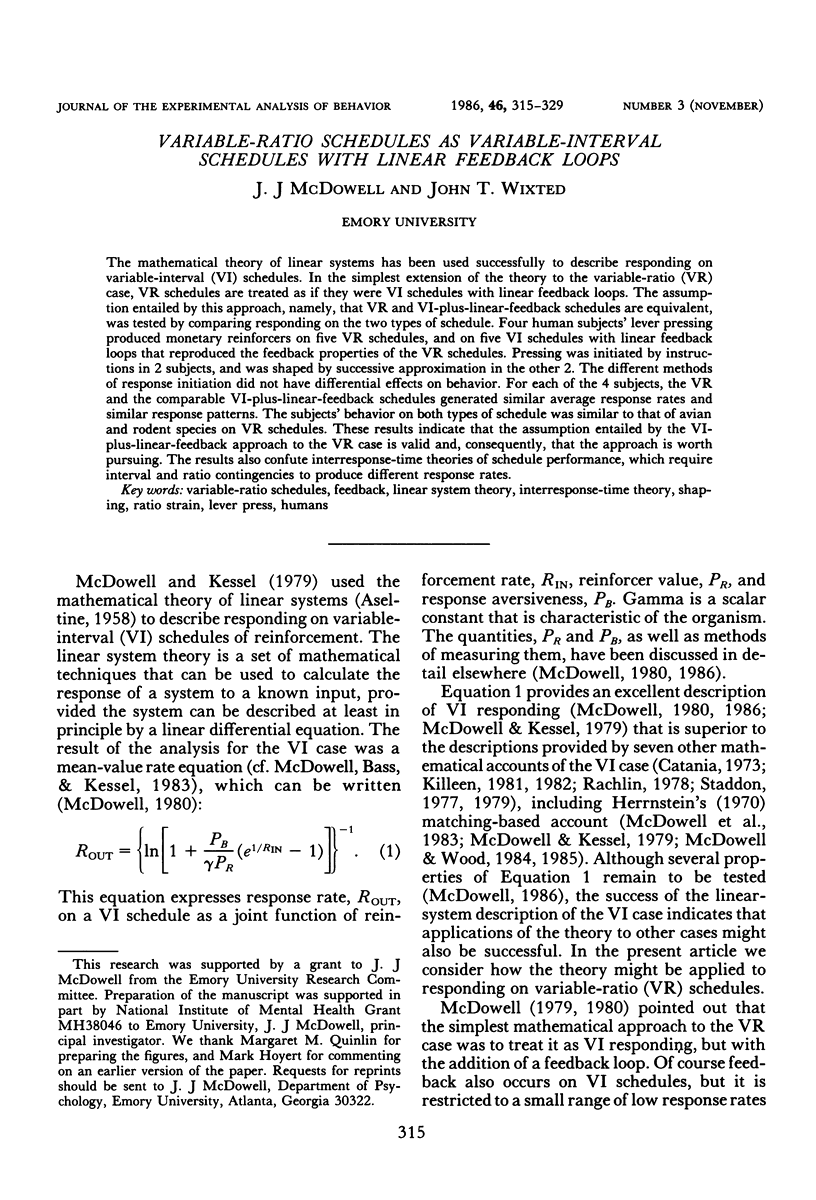
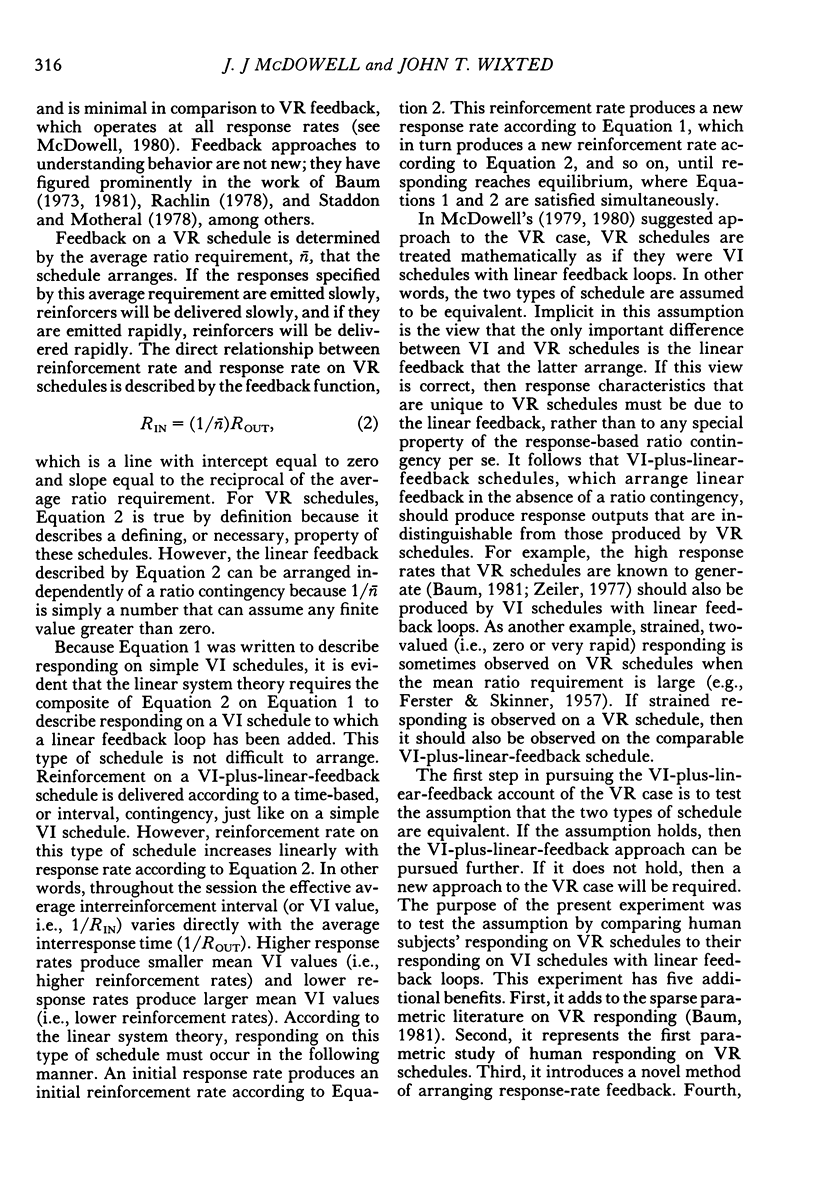
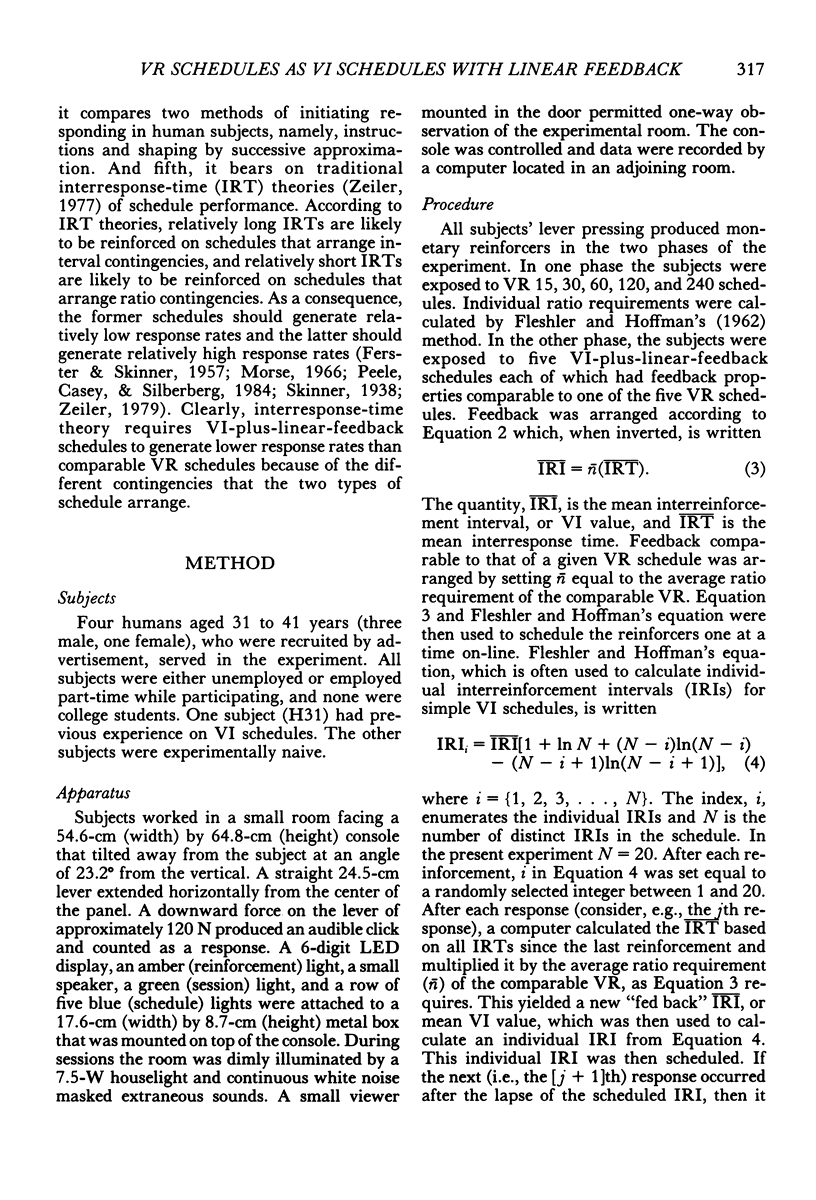
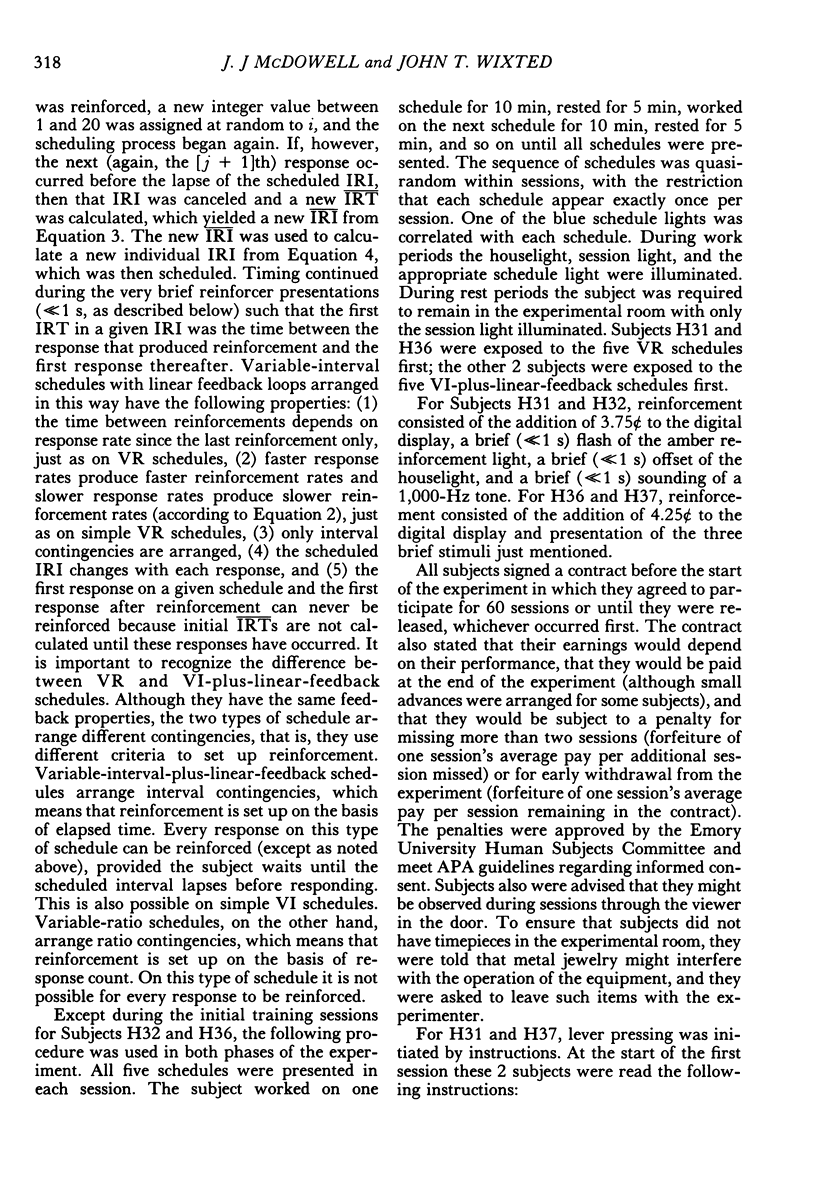
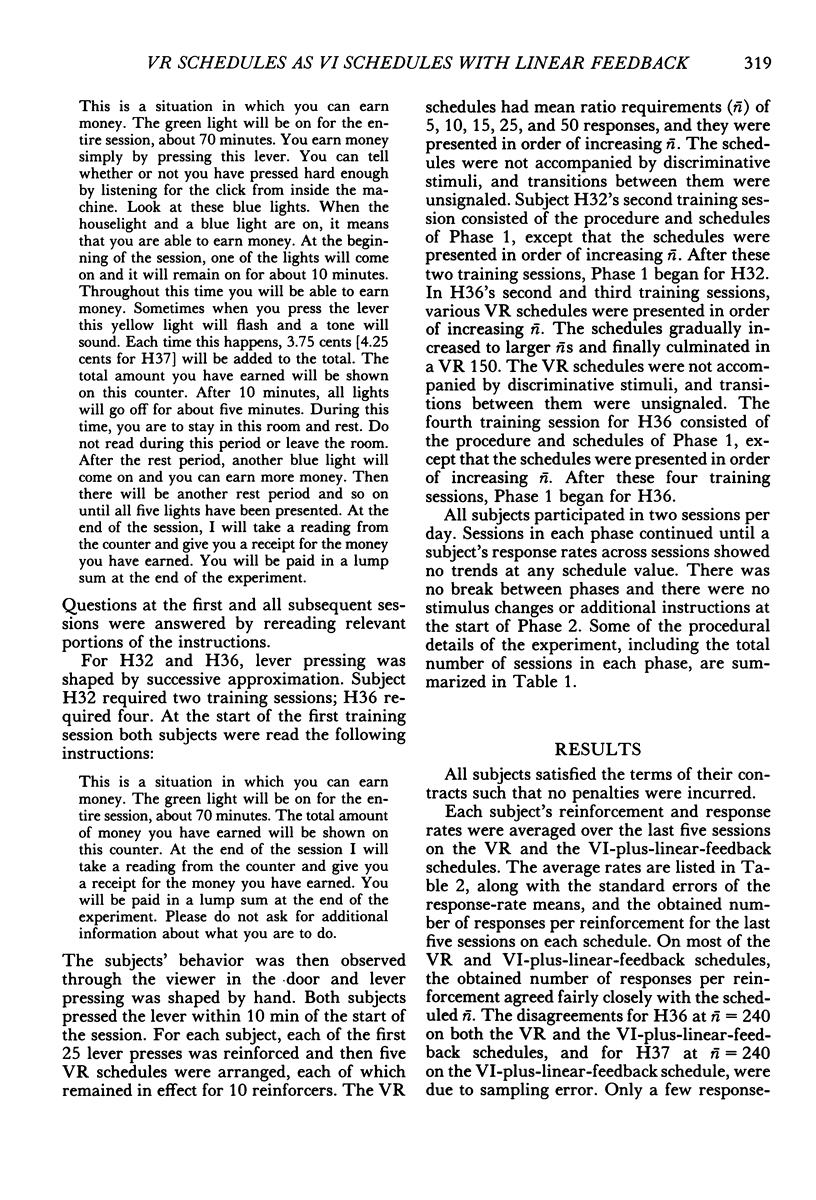
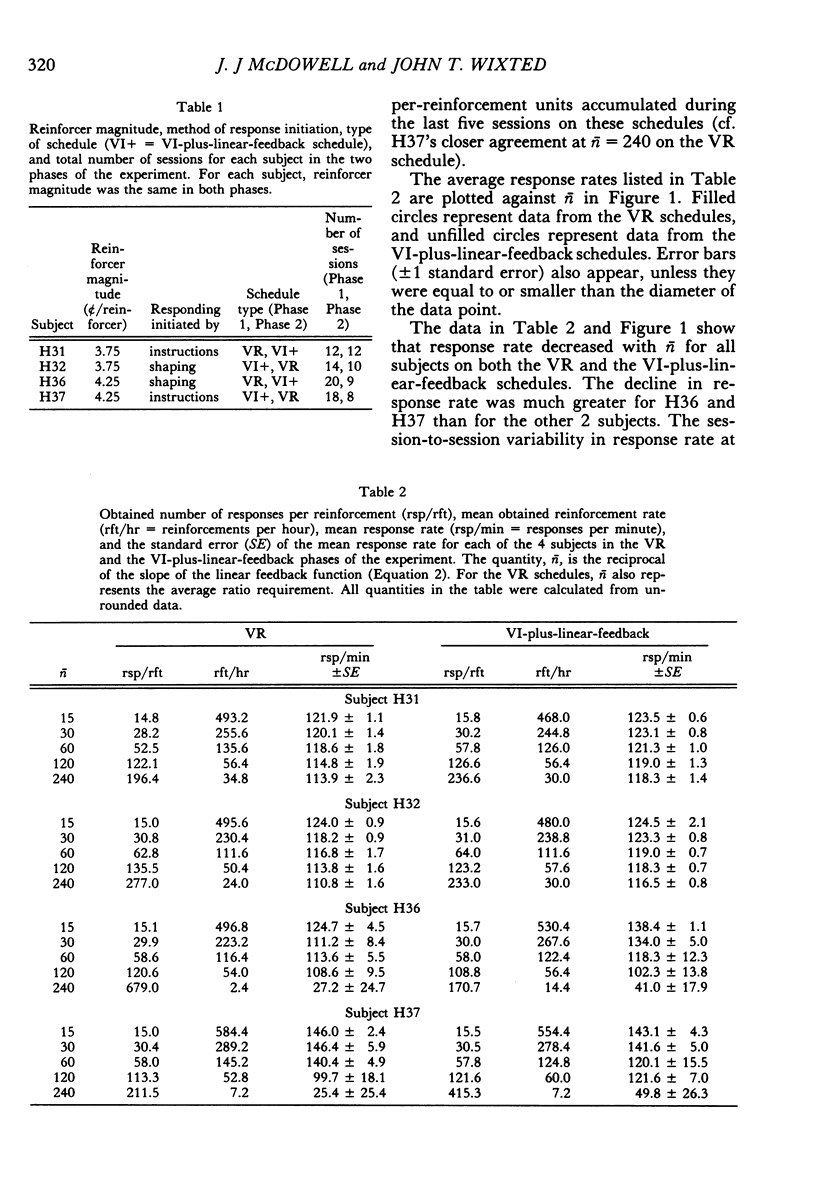
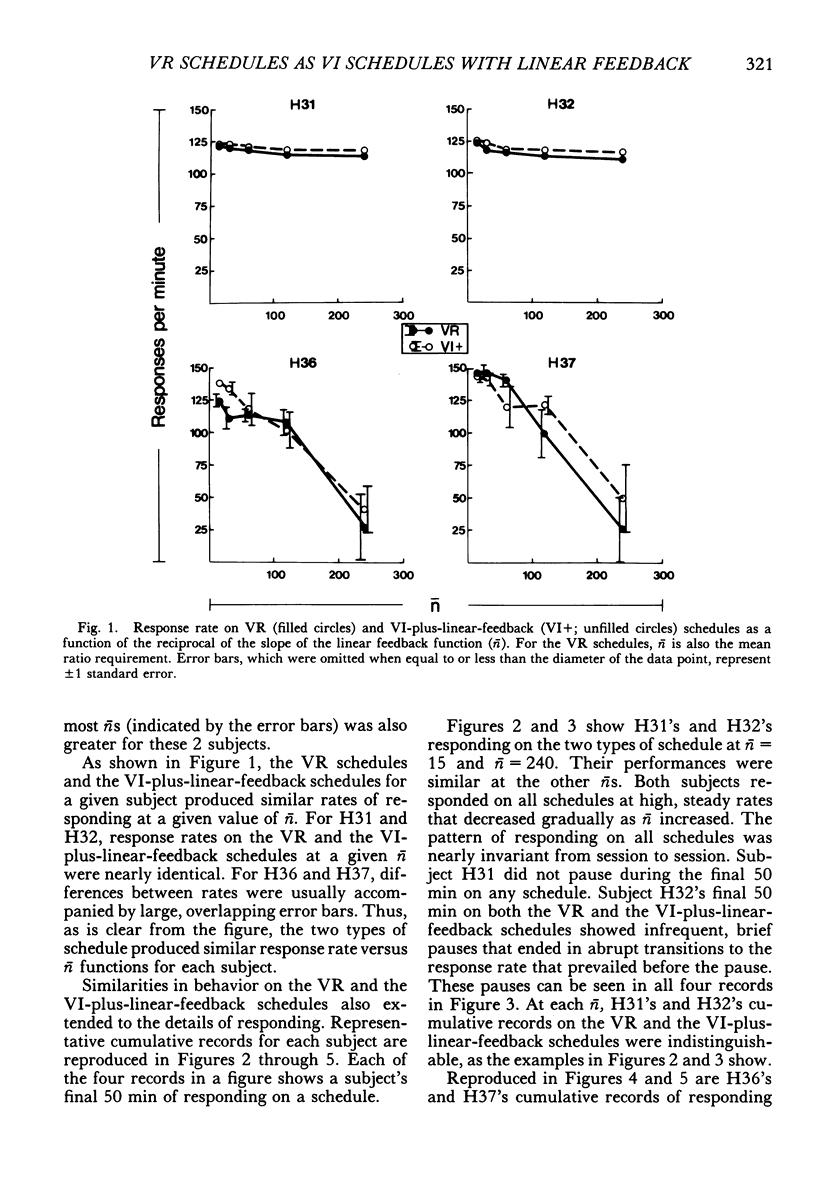
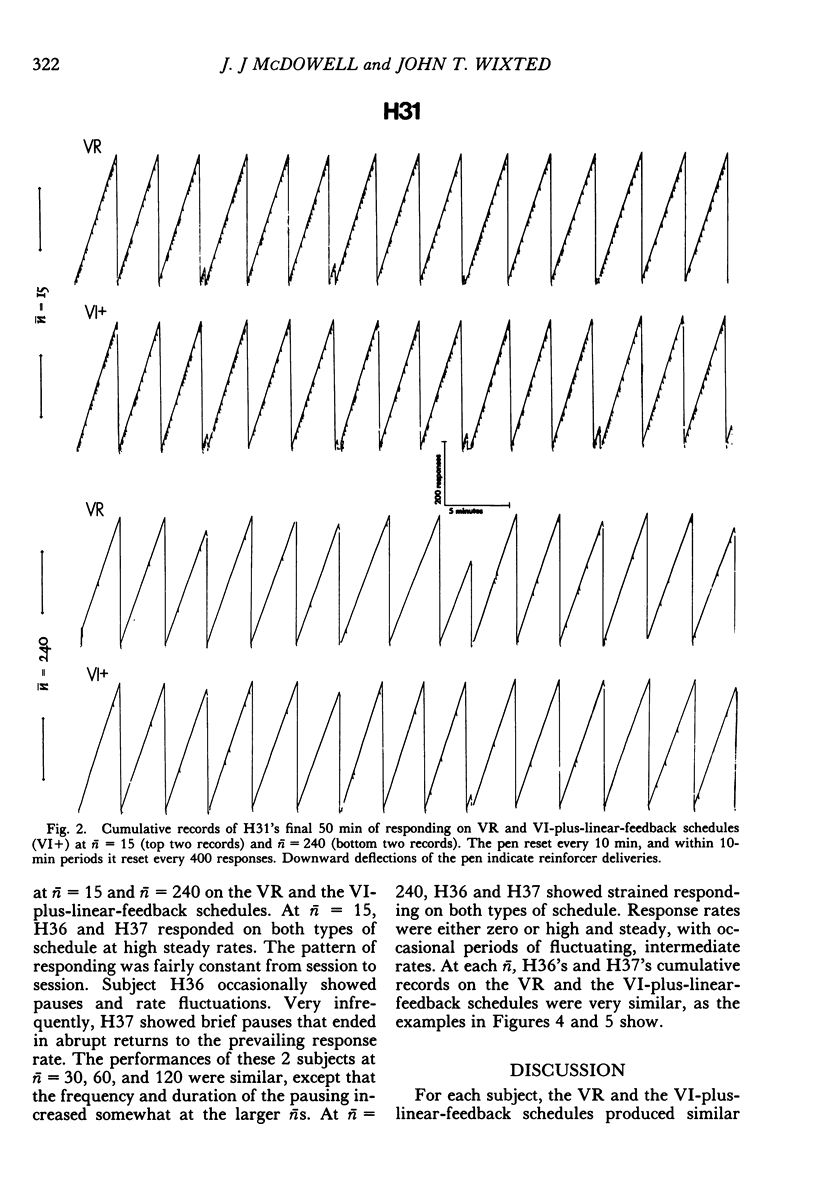
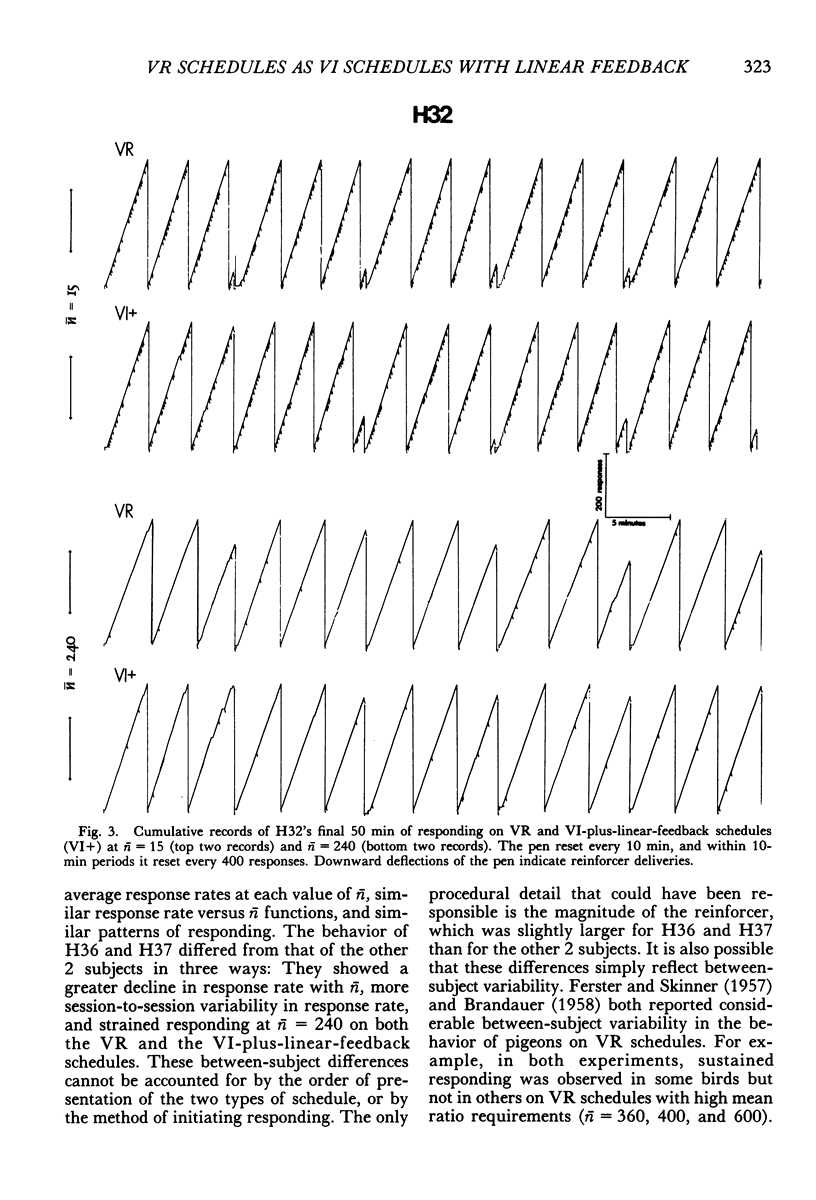

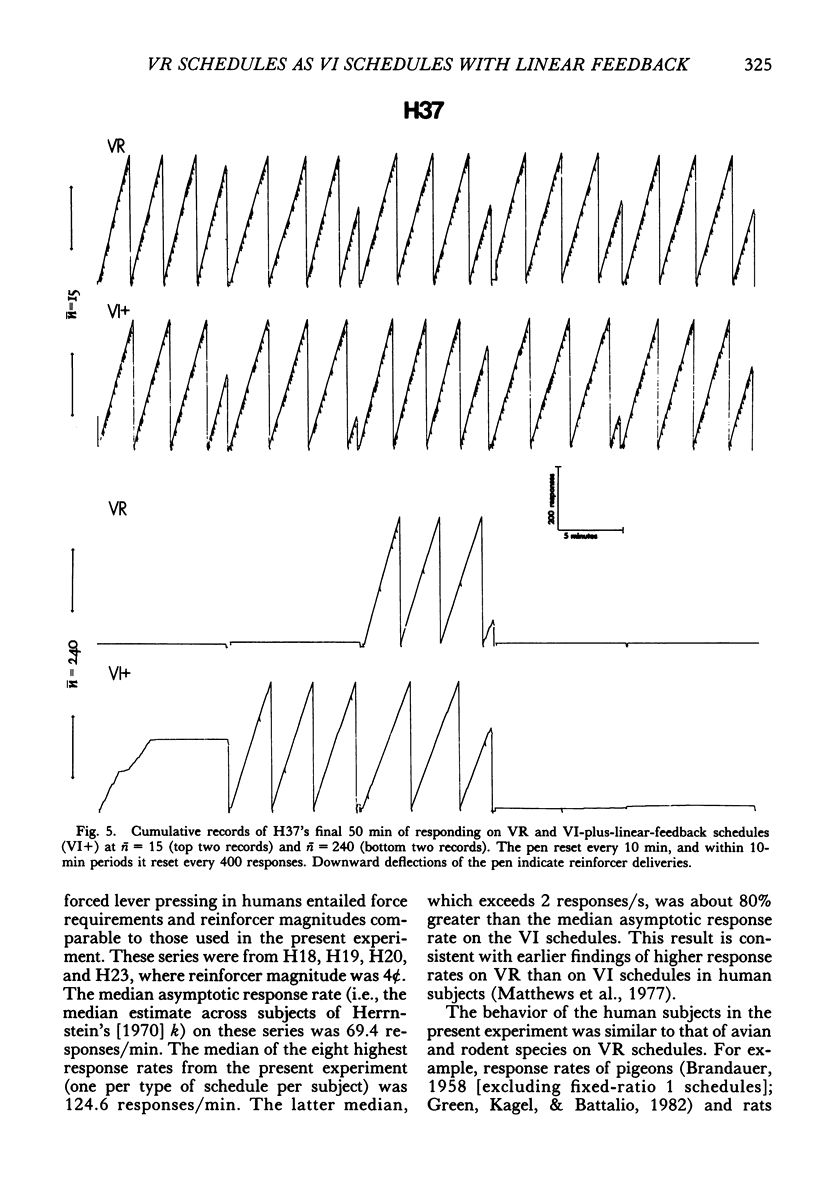
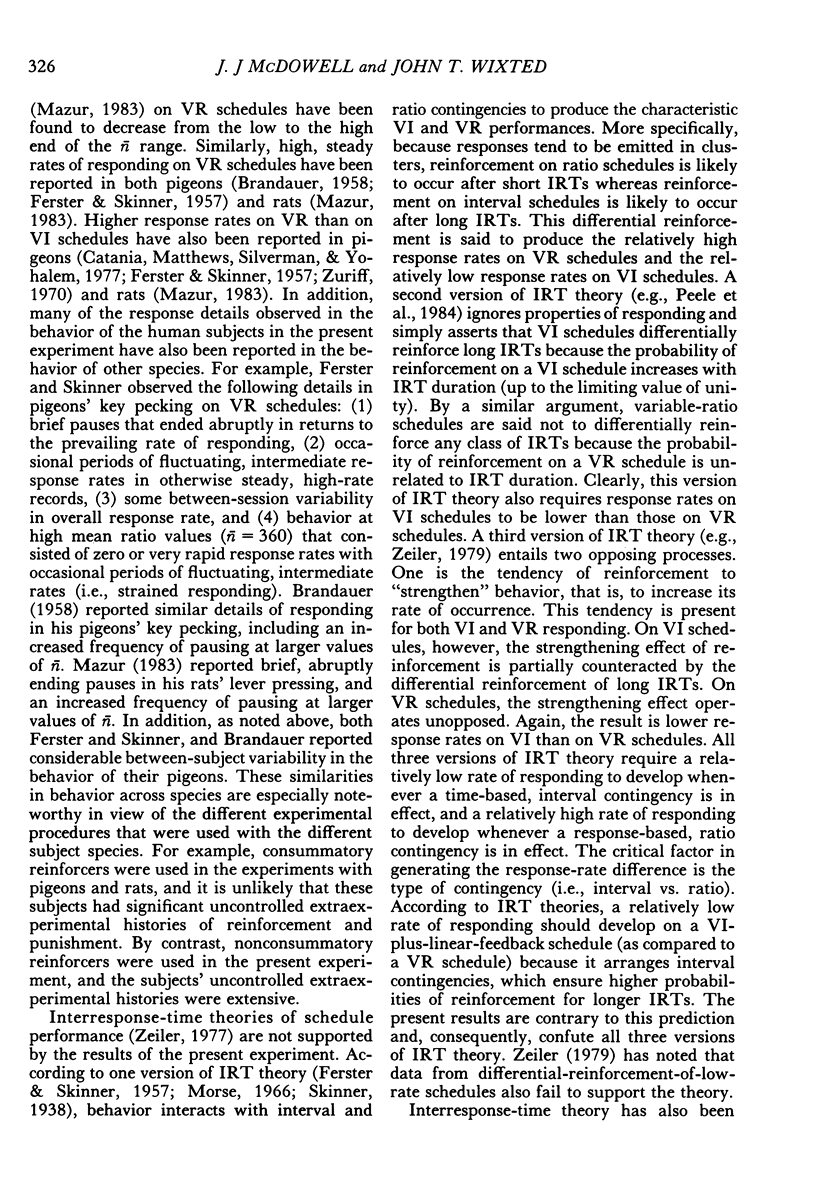
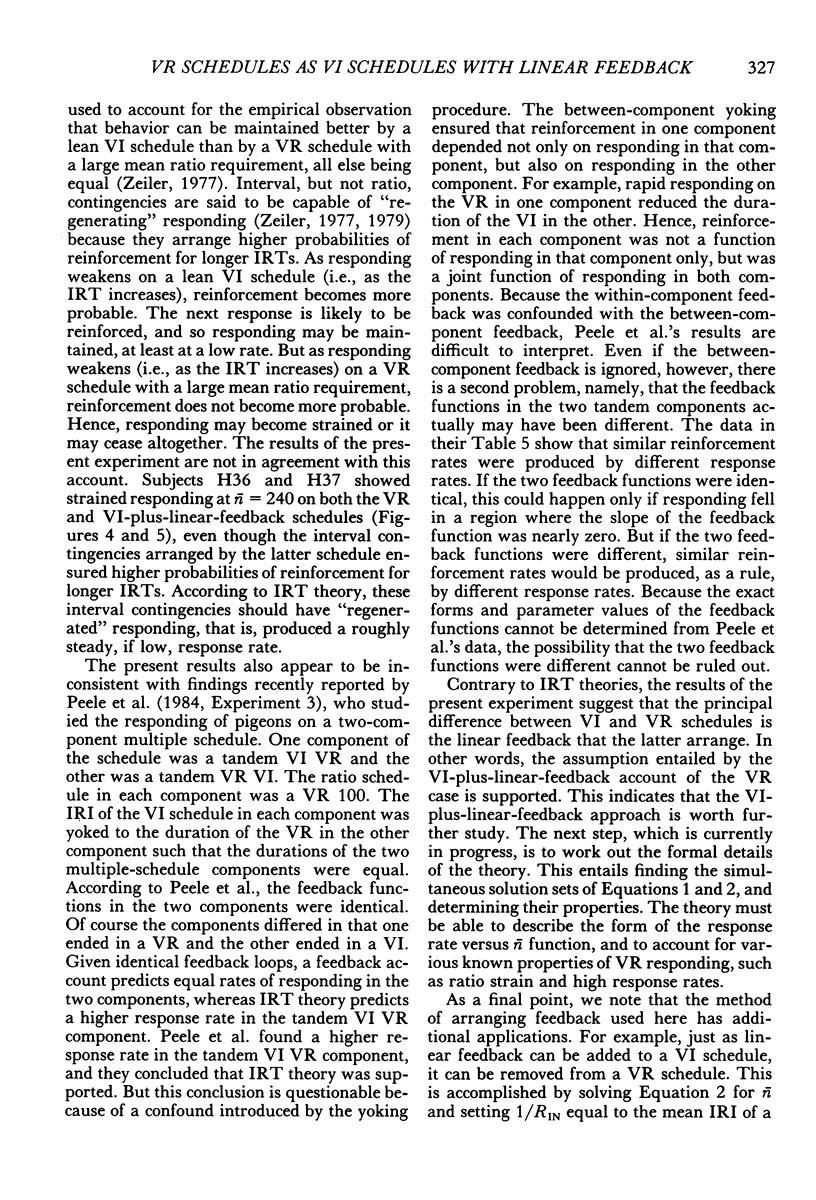
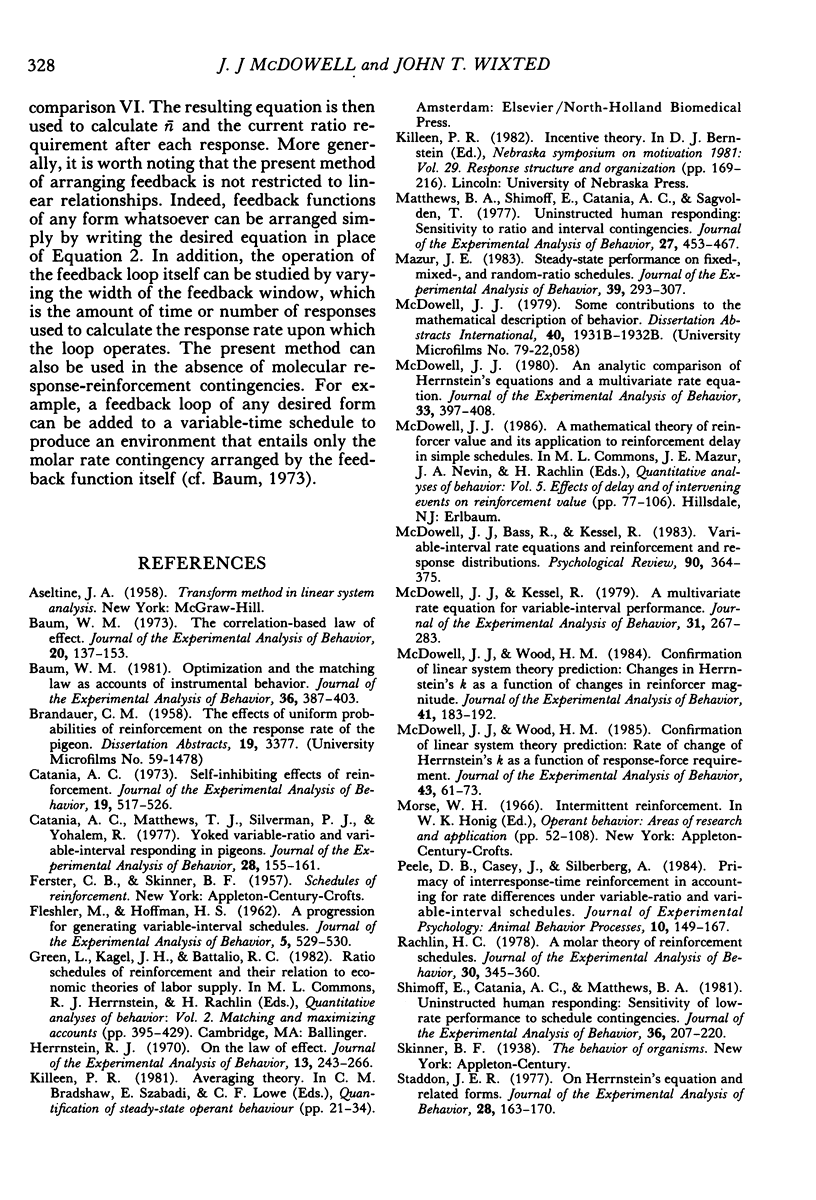
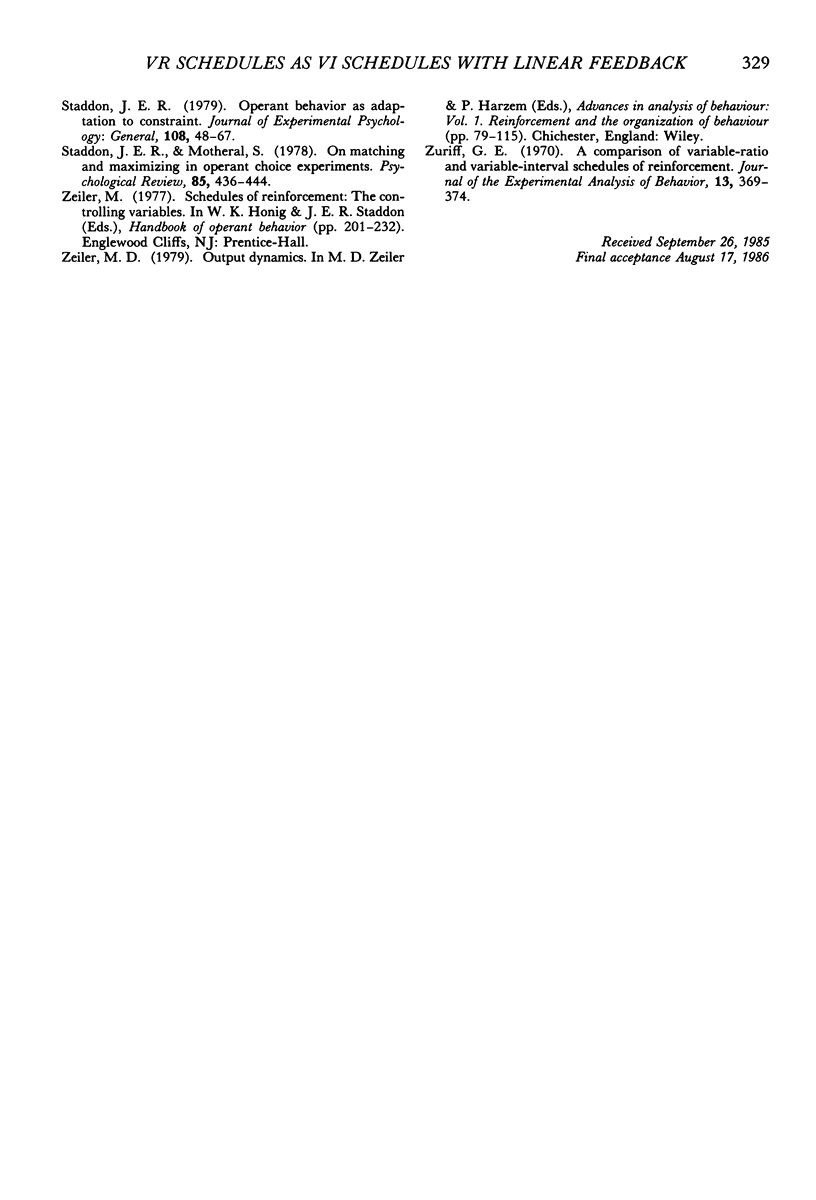
Selected References
These references are in PubMed. This may not be the complete list of references from this article.
- Baum W. M. Optimization and the matching law as accounts of instrumental behavior. J Exp Anal Behav. 1981 Nov;36(3):387–403. doi: 10.1901/jeab.1981.36-387. [DOI] [PMC free article] [PubMed] [Google Scholar]
- Baum W. M. The correlation-based law of effect. J Exp Anal Behav. 1973 Jul;20(1):137–153. doi: 10.1901/jeab.1973.20-137. [DOI] [PMC free article] [PubMed] [Google Scholar]
- Catania A. C., Matthews T. J., Silverman P. J., Yohalem R. Yoked variable-ratio and variable-interval responding in pigeons. J Exp Anal Behav. 1977 Sep;28(2):155–161. doi: 10.1901/jeab.1977.28-155. [DOI] [PMC free article] [PubMed] [Google Scholar]
- Catania A. C. Self-inhibiting effects of reinforcement. J Exp Anal Behav. 1973 May;19(3):517–526. doi: 10.1901/jeab.1973.19-517. [DOI] [PMC free article] [PubMed] [Google Scholar]
- FLESHLER M., HOFFMAN H. S. A progression for generating variable-interval schedules. J Exp Anal Behav. 1962 Oct;5:529–530. doi: 10.1901/jeab.1962.5-529. [DOI] [PMC free article] [PubMed] [Google Scholar]
- Herrnstein R. J. On the law of effect. J Exp Anal Behav. 1970 Mar;13(2):243–266. doi: 10.1901/jeab.1970.13-243. [DOI] [PMC free article] [PubMed] [Google Scholar]
- Matthews B. A., Shimoff E., Catania A. C., Sagvolden T. Uninstructed human responding: sensitivity to ratio and interval contingencies. J Exp Anal Behav. 1977 May;27(3):453–467. doi: 10.1901/jeab.1977.27-453. [DOI] [PMC free article] [PubMed] [Google Scholar]
- Mazur J. E. Steady-state performance on fixed-, mixed-, and random-ratio schedules. J Exp Anal Behav. 1983 Mar;39(2):293–307. doi: 10.1901/jeab.1983.39-293. [DOI] [PMC free article] [PubMed] [Google Scholar]
- McDowell J. J. An analytic comparison of Herrnstein's equations and a multivariate rate equation. J Exp Anal Behav. 1980 May;33(3):397–408. doi: 10.1901/jeab.1980.33-397. [DOI] [PMC free article] [PubMed] [Google Scholar]
- McDowell J. J., Kessel R. A multivariate rate equation for variable-interval performance. J Exp Anal Behav. 1979 Mar;31(2):267–283. doi: 10.1901/jeab.1979.31-267. [DOI] [PMC free article] [PubMed] [Google Scholar]
- McDowell J. J., Wood H. M. Confirmation of linear system theory prediction: Changes in Herrnstein's k as a function of changes in reinforcer magnitude. J Exp Anal Behav. 1984 Mar;41(2):183–192. doi: 10.1901/jeab.1984.41-183. [DOI] [PMC free article] [PubMed] [Google Scholar]
- McDowell J. J., Wood H. M. Confirmation of linear system theory prediction: Rate of change of Herrnstein's kappa as a function of response-force requirement. J Exp Anal Behav. 1985 Jan;43(1):61–73. doi: 10.1901/jeab.1985.43-61. [DOI] [PMC free article] [PubMed] [Google Scholar]
- Rachlin H. A molar theory of reinforcement schedules. J Exp Anal Behav. 1978 Nov;30(3):345–360. doi: 10.1901/jeab.1978.30-345. [DOI] [PMC free article] [PubMed] [Google Scholar]
- Shimoff E., Catania A. C., Matthews B. A. Uninstructed human responding: Sensitivity of low-rate performance to schedule contingencies. J Exp Anal Behav. 1981 Sep;36(2):207–220. doi: 10.1901/jeab.1981.36-207. [DOI] [PMC free article] [PubMed] [Google Scholar]
- Staddon J. E. On Herrnstein's equation and related forms. J Exp Anal Behav. 1977 Sep;28(2):163–170. doi: 10.1901/jeab.1977.28-163. [DOI] [PMC free article] [PubMed] [Google Scholar]
- Zuriff G. E. A comparison of variable-ratio and variable-interval schedules of reinforcement. J Exp Anal Behav. 1970 May;13(3):369–374. doi: 10.1901/jeab.1970.13-369. [DOI] [PMC free article] [PubMed] [Google Scholar]


